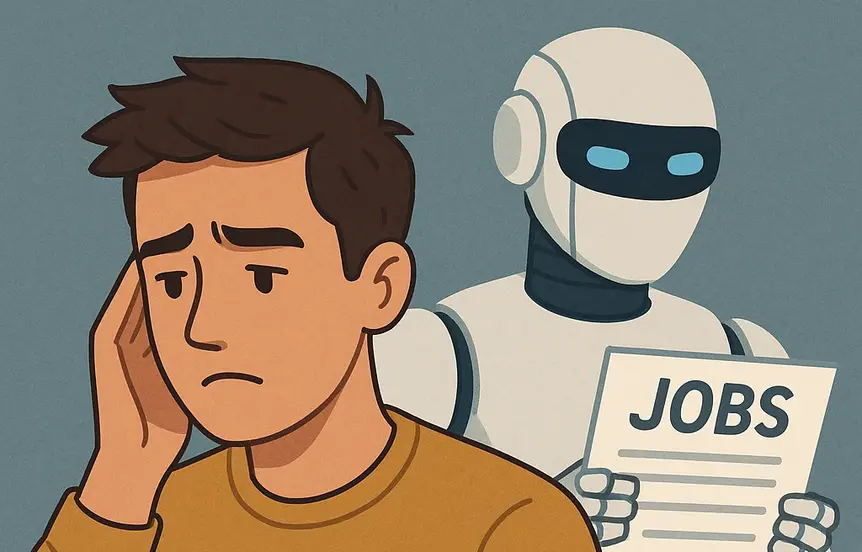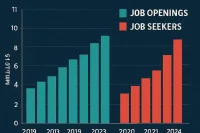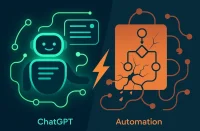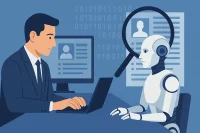AI eliminating jobs for young workers has reached a critical turning point, with Stanford University economists providing the strongest evidence yet that artificial intelligence is beginning to displace certain types of employment. According to a comprehensive report from Wired, this research represents the first concrete data showing that AI is actively eliminating jobs rather than just threatening future employment, with young workers and college graduates being disproportionately affected.
The study examined payroll data over several years since ChatGPT came online, revealing that rather than eliminating specific types of jobs across the board, AI is targeting particular categories of work and certain types of workers – primarily less experienced, younger employees. This finding validates long-standing concerns about AI’s impact on entry-level positions and early career opportunities.
The research provides crucial insights into how AI is reshaping the job market, particularly affecting industries like coding and customer support where junior workers traditionally gain experience and build their careers. This development has significant implications for young workers entering the job market and those in the early stages of their professional development.
The Stanford Research: First Concrete Evidence of AI Job Displacement
Rigorous academic research now provides concrete evidence of job displacement by examining real payroll data rather than theoretical predictions. The Stanford economists’ study represents a breakthrough in understanding AI’s actual impact on employment, moving beyond speculation to concrete evidence of job displacement.
The research methodology involved analyzing payroll data across multiple years since ChatGPT’s introduction, providing a comprehensive view of how AI implementation has affected different types of workers. This longitudinal approach allows researchers to track changes in employment patterns as AI tools became more widely adopted.
The findings reveal that AI’s impact is not uniform across all job categories but is concentrated in specific areas where younger, less experienced workers typically find employment. This targeted displacement creates particular challenges for career development and skill building among new graduates.
The Vulnerability of Entry-Level Positions: Where AI Hits Hardest
Job displacement is most pronounced in entry-level positions where junior employees traditionally learn fundamental skills and gain professional experience. Industries like coding and customer support, which have historically served as training grounds for young professionals, are now among the most vulnerable to AI automation.
The research shows that AI tools like ChatGPT can automate many of the simplest tasks that interns and junior employees typically handle, such as basic coding assignments, routine customer inquiries, and data entry. These tasks, while seemingly mundane, are crucial for skill development and career progression.
This displacement creates a “missing rung” problem in career ladders, where young workers lose access to the foundational experiences they need to advance to more senior positions. The elimination of these entry points could have long-term consequences for workforce development and career mobility.
The Paradox of AI Implementation: Creating New Opportunities While Eliminating Others
Job displacement is only part of the story, as the research also reveals that AI implementation can create new opportunities in some cases. The study found that in certain industries, job opportunities actually increased as new roles emerged for people to oversee AI systems and ensure they function correctly.
This creates a complex dynamic where AI both eliminates and creates employment opportunities, often within the same industries. The challenge for young workers is identifying and accessing these new opportunities while avoiding the positions that are being automated.
The emergence of AI oversight roles represents a new category of work that requires human judgment and expertise to ensure AI systems operate safely and effectively. These positions often require a different skill set than traditional entry-level jobs, creating both opportunities and barriers for young workers.
The Skills Gap Challenge: Preparing for an AI-Driven Future
This trend raises critical questions about education and skill development for young people entering the workforce. The rapid pace of AI advancement means that traditional educational approaches may not adequately prepare students for a job market where AI tools are ubiquitous.
The challenge is particularly acute because AI capabilities are advancing faster than educational curricula can adapt. Skills that seemed safe from automation just a few years ago, such as coding and mathematical analysis, are now being automated by increasingly sophisticated AI systems.
This creates a moving target for young workers who must continuously adapt their skills to remain relevant in an AI-driven economy. The traditional model of learning specific skills for specific careers may no longer be sufficient in a world where AI capabilities are constantly evolving.
The Human-AI Collaboration Imperative: New Models of Work
This trend is driving the need for new models of human-AI collaboration that leverage the strengths of both humans and machines. The Stanford researchers recommend developing benchmarks that measure how well humans and AI can work together, potentially encouraging companies to create new types of jobs.
This collaborative approach could lead to the emergence of entirely new business models and career paths that didn’t exist before AI became prevalent. Young workers who can master human-AI collaboration may find themselves in high demand as this becomes the dominant mode of work.
The key is developing skills that complement rather than compete with AI capabilities, focusing on areas where human judgment, creativity, and interpersonal skills remain essential. This requires a fundamental shift in how we think about education and career preparation.
The Future of Human-AI Collaboration
The rise of human-AI collaboration is creating entirely new job models that value both technological and human strengths. Employers can lead this transformation by hiring professionals skilled in creativity, judgment, and AI-enabled innovation. Post your job on WhatJobs today and connect with top talent ready to shape the next era of collaborative work.
Post a Job Free for 30 Days →The Uncertainty Factor: Navigating an Unpredictable Job Market
This trend creates significant uncertainty for young people trying to plan their careers in an evolving job market. The rapid pace of AI development means that job market conditions can change dramatically in short periods, making long-term career planning extremely difficult.
This uncertainty affects not only individual career decisions but also educational choices, as students must decide which fields of study will remain relevant in an AI-driven economy. The traditional approach of choosing a major based on job market projections may no longer be reliable.
Young workers must develop adaptability and continuous learning skills to navigate this uncertain landscape. The ability to quickly acquire new skills and pivot between different types of work may become more valuable than deep expertise in any single area.
The Educational Response: Rethinking How We Prepare Young Workers
This trend requires a fundamental rethinking of education and training approaches to prepare students for an AI-driven economy. Traditional educational models that focus on knowledge acquisition may need to shift toward developing critical thinking, creativity, and adaptability skills.
The challenge is ensuring that young people are educated to be truly expert in their fields while also being able to effectively use and oversee AI tools. This requires a balance between deep domain knowledge and technical proficiency with AI systems.
Educational institutions must also prepare students for careers that may not exist yet, focusing on transferable skills and the ability to learn new technologies quickly. This represents a significant shift from the traditional model of preparing students for specific, well-defined career paths.
The Policy Implications: Supporting Young Workers in an AI Economy
This trend has significant policy implications that extend beyond individual career choices and require new approaches to workforce support. Governments and institutions must consider how to support young workers who are disproportionately affected by AI-driven job displacement.
This may require new approaches to social safety nets, education funding, and workforce development programs. The traditional model of unemployment insurance and job training programs may need to be adapted for an economy where job displacement is more frequent and unpredictable.
Policymakers must also consider how to ensure that the benefits of AI technology are shared broadly across society, rather than being concentrated among those who can afford to adapt to new technologies and work models.
The Long-Term Outlook: Adapting to Continuous Change
This represents the beginning of a long-term transformation of the job market that will require ongoing adaptation from young workers. Young workers must prepare for a career landscape that will continue to evolve as AI capabilities advance.
This means developing skills and mindsets that enable continuous learning and adaptation throughout one’s career. The traditional model of learning a skill set and applying it for decades may no longer be viable in an AI-driven economy.
The key to success may be embracing AI tools and learning to work effectively with them, rather than trying to compete against them. Young workers who can master human-AI collaboration may find themselves well-positioned for the future of work.
Frequently Asked Questions
What does AI eliminating jobs for young workers mean for career planning?
AI eliminating jobs for young workers means that traditional career paths are being disrupted, requiring young people to focus on developing adaptable skills, human-AI collaboration abilities, and continuous learning capabilities rather than specific technical expertise.
How does AI eliminating jobs for young workers compare to previous technological disruptions?
AI eliminating jobs for young workers differs from previous disruptions because it affects entry-level positions disproportionately, creating a “missing rung” problem in career ladders and requiring new approaches to skill development and career preparation.
What are the main industries affected by AI eliminating jobs for young workers?
Main industries affected include coding, customer support, data entry, and other entry-level positions where junior workers traditionally gain experience, with AI tools automating the simplest tasks that new graduates typically handle.
How can young workers prepare for AI eliminating jobs for young workers?
Young workers can prepare by developing human-AI collaboration skills, focusing on areas where human judgment remains essential, embracing continuous learning, and building adaptability to navigate an uncertain job market.
A Real-World Example: Sarah’s Career Pivot
Sarah Chen, a 24-year-old recent computer science graduate from UC Berkeley, exemplifies how AI eliminating jobs for young workers can force career adaptation. After struggling to find traditional coding positions due to AI automation, Sarah had to quickly pivot her career strategy.
“I graduated thinking I’d get a junior developer position, but AI eliminating jobs for young workers made it clear that traditional entry-level coding jobs were disappearing,” Sarah explains. “I had to completely rethink my approach to building a career in tech.”
Sarah’s solution was to focus on AI ethics and human-AI collaboration, areas where human expertise remains essential. She completed additional training in AI oversight and now works as a consultant helping companies implement AI responsibly while maintaining human oversight.
“AI eliminating jobs for young workers taught me that the key is finding where human judgment adds value rather than competing with AI directly,” Sarah says. “I now work alongside AI tools rather than being replaced by them, and I’m actually more valuable to employers than I would have been in a traditional coding role.”
Within two years of graduation, Sarah was earning more than her peers who found traditional tech jobs, while working on projects that she found more meaningful and future-proof. Her experience demonstrates that while AI eliminating jobs for young workers presents challenges, it also creates opportunities for those willing to adapt and develop new skills.




